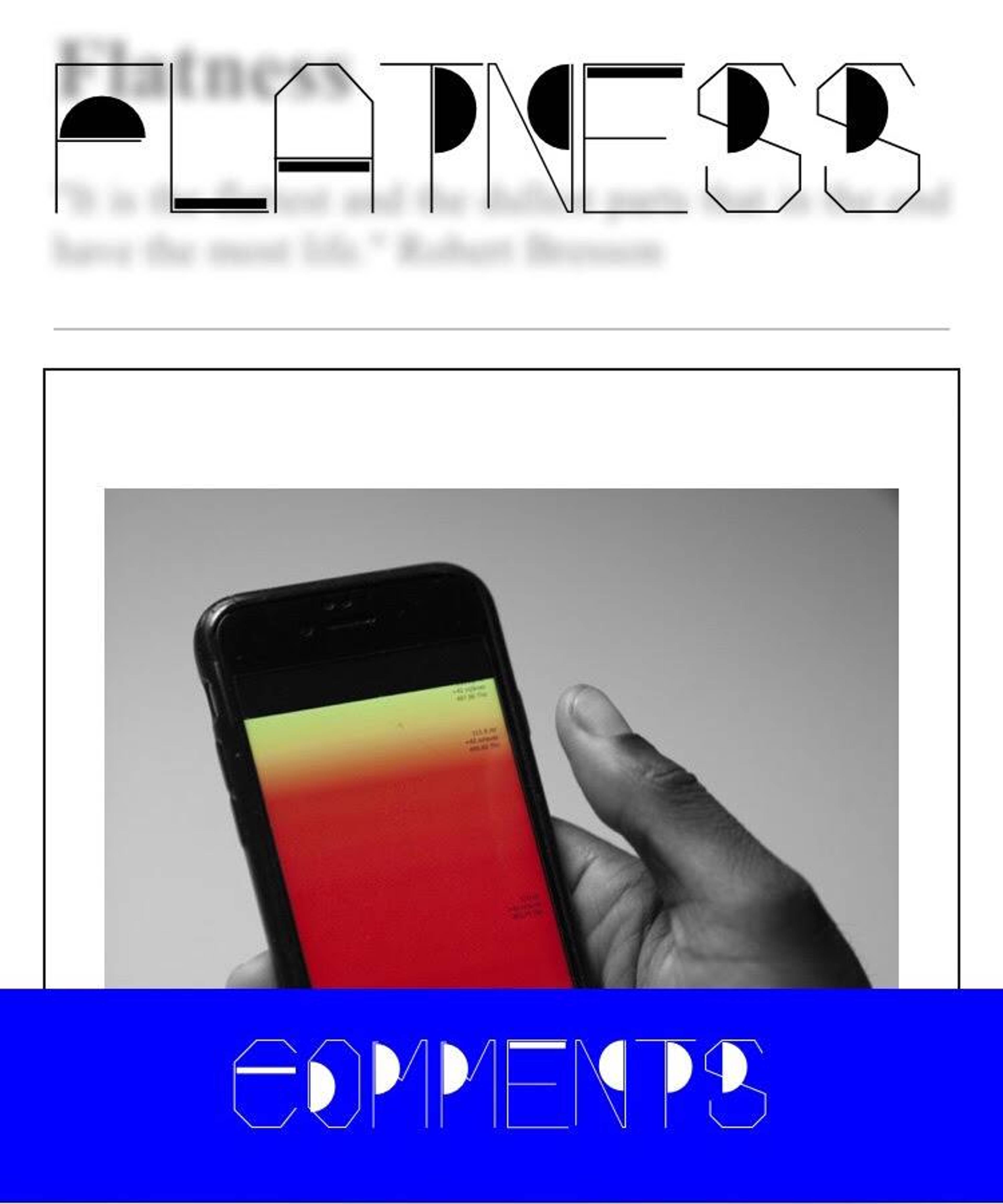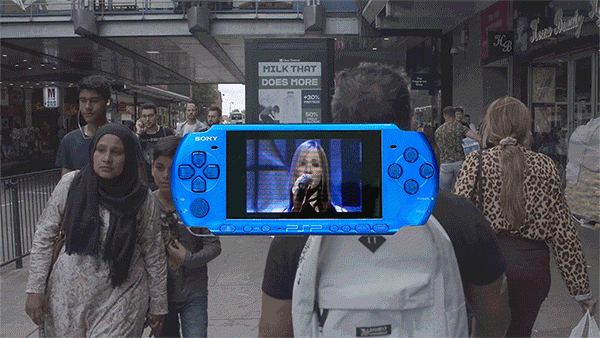The online moving image platform Flatness relaunched earlier this year. After an IRL screening of contributor Dan Walwin’s video work at Whitechapel Gallery in London, Flatness curator Shama Khanna and I started talking over email and by phone. In the conversations below, we discussed the new programme, exhibiting and distributing art online, working against “extractive and manipulative big monopoly platforms”, the internet’s US white male power skew, and the unequal distribution of opportunities for people of colour in the art industry.
The first Flatness programme ran from 2013 to 2015 and featured moving images and text from Ed Atkins, Anthea Hamilton, and Mark Fisher. Khanna also curates the screening series, Non-Linear (2017-) and teaches Experimental Film and Curating at Kingston University and Royal College of Art. The new 2019 programme includes artist contributions from Dan Walwin, Nikhil Vettukattil, Lucy Clout (winner of the 2015 Jerwood/Film prize), and commissions by Rehana Zaman (who was shortlisted for the 2019 Jarman Award) and Adam Farah.
Dan Walwin, Image from Demon Floats Out to Meet you , 2019
Henry Broome: How did Flatness first come about and what made you relaunch the platform this year?
Shama Khanna: The first iteration was an extension of a moving image programme of screenings I curated for Oberhausen Short Film Festival, Flatness: Cinema after the Internet , which included contributions from Ed Atkins, Anthea Hamilton, Oliver Laric, Ghislaine Leung and many more artists. Viewership was limited by geographic proximity and access to the festival, so the website provided a platform for remote online audiences to view the works, as well as space to expand discussion with commissioned texts by Mark Fisher , Mercedes Bunz and other thinkers. The platform’s programme speculated on the potential for online audiences to be creators of the work (producer-consumers), and examined subjective, historical, and labour relationships flattened by the screen.
The new 2019 programme developed out of the political ruptures of 2016, as well as #MeToo, #BlackLivesMatter and the Arab Spring, movements mobilised by the internet. It’s also a reflection of my lived experience of the art industry where people of colour are – in token ways – hypervisible, but remain structurally disempowered. The platform provides a critical framework to understand social media’s empowering potential against its ultimately extractive and manipulative business models, as shown by Zuckerberg’s infamous hearing last year. I think Flatness offers a mouldable alternative. You don’t need to log in or pay to view works. The site’s free and open to all. It’s still possible to build your own spaces rather than succumb to the format of big monopoly platforms. As the founder of the World Wide Web, Tim Berners Lee said, the future of the internet relies on individuals making and adding to their own sites and keeping control of their data.
The platform is engaged in exploring and building online communities. Lucy Clout’s recent work looks at intimate internet relationships. Also, the comments section provides a forum not only for the artists and viewers to talk about the work, but also to share articles and ideas, something like the space for skill-sharing and connection it was hoped the internet might be back in the 1990s.
Right! The comments thread is the feedback loop I always wanted for the site. So far, it’s been slow to take off, maybe because we’re all so invested in the validation system of ‘likes’. I’m not interested in gamified posting; I hope it’s simply a space away from Instagram, to be slower and more reflective.
Lucy Clout’s work for Flatness marks a departure from earlier experiences of using web message boards to connect with people with similar concerns and desires. For part of it, she repurposed Focusmate, a productivity app for freelancers to work remotely alongside each other via webcams. Lucy invited people to simply share virtual company with her, de-weaponising the camera as a tool for (self-)surveillance, instead reinvigorating its capacity for social exchange and emotional support.
Adam Farah, GIF from MEDICATED SUMMERS / BENEFITS TRAP / ENDS PORTALS , 2019
Critics of post-internet art say it not only reproduces the sort of social media narcissism it supposedly ironises; but also critique its monocultural of predominantly white North American-Western Europeans. Flatness doesn’t make any direct claim to the post-internet age, but how does it work against its criticisms?
I would say that the internet itself is skewed by White north American men, who’ve had the privilege of building it: voice assistants can more effectively understand male voices; facial recognition works better with white faces; and back in 2014, I remember Apple was shown up for launching a health app that monitored metrics like sodium intake but not menstruation.
I have mostly regarded the term as a cynical marketing ploy by dealers to make digital art sellable rather than simply copy-able. But ultimately what happened at LD50 Gallery revealed the post-internet’s darker fascistic inclinations. Flatness is much more concerned the #’s mentioned earlier, as well as artistic web activity before 2000, most notably Cyberfeminism, crucially with its frame widened by thinkers like Paul B. Preciado, artist Mhysa, and now contributors to Flatness !
Lucy Clout, Video still from Pro , 2019
Flatness is Arts Council-funded and content is free to view, unlike online art sites like dis, which have fee-paying subscription models. How does this affect the works’ content, development, and distribution?
It’s much slower! At the moment, it’s dependent on my teaching schedule and energy levels to apply for funding and hopefully follow through. But it’s a luxury to have the freedom to invite artists to contribute without needing to make money from the site.
Works resist commodification in some senses. Dan Walwin is intermittently adapting their work (which makes it tough to document!); Rehana organised a dinner for South Asian trans and womxn practitioners, which so far has little visibility save for a few Instagram responses from guests; and Lucy has held private ‘virtual company’ sessions and given me a present, which may have no public value at all.
The 2019 commissions are fewer and better funded which has also meant they’ve been longer in development. Each project evolves through conversations with artists – I don’t try to control the outcome. They’re are invited as ‘contributors’, and visitors are free to comment on the site. It’s a small way for me to attempt to open out the commissioner-commissioned one-way dynamic.
I keep saying I want to decentralise the site from my curatorial influence altogether, but this hasn’t quite happened. I’d really like to rethink the structure, perhaps reconstitute it as a co-op, so there’s more of a sustained and sustainable momentum behind it. I’m very tempted by the idea to leave a Flatness YouTube channel open on the site for people to upload their work.
But while Arts Council has helped support Flatness , arts funding and job opportunities in the art industry are still racially and socially unequally distributed, despite attempts to redress the balance.
As a brown British woman, it’s been extra hard for me to find work in art institutions and the website is a response to this. The funding the project received last year is enabling. But I’m really trying to question the nature of representation and whether it’s still interesting to marginalised artists; does focusing on it help them to create or does it repeat old traumas? If not, then we need to redefine concepts like visibility, value, and care to help enable practitioners side-lined by an art experience dominated by white patriarchal capitalist conventions. Along with the artists I’m working with, particularly Rehana and Adam, I am interested in moving out from the margins, but on our own terms, examining our own complicities as we go. Flatness and my other project, “Non-linear”, symbolise a rejection of hierarchies and received ideas like ‘progress’ which have failed so many.
Flatness relaunched this year and can be found here .





